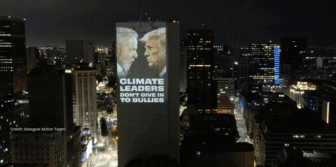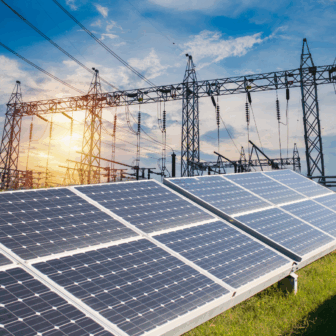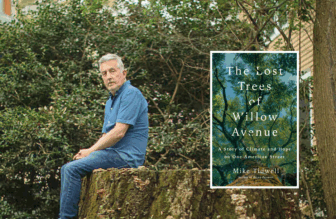By: Jonathan Wilson
Jean Marie Neal leads me down a short-mulched path behind her house, onto the sand of Cove Point Beach. We’re looking out onto the Chesapeake Bay — Cove Point Hollow specifically. There are other homes that back up to the beach, but mostly what you see here are trees, sand and water… until you look to your north and a bit west, about a mile in the distance.
That’s where Dominion’s property lies, and where two stark white storage tanks rise up above the trees.
“The overall concern is that what you’re doing is you’re turning this entire area into an industrial site — that, itself, just blows your mind,” Neal says.
Dominion owns more than 1,000 acres here… but only uses about 150 acres for actual operations. And that much won’t change if its $3.8 billion project gets all the necessary permits from state and federal agencies.
The company’s expanded facility would allow Dominion to liquefy 750 million cubic feet of natural gas per day, and export it with the help of an estimated 90 fuel tankers each year — massive ships that Jean Marie Neal would see out her back window.
“Keep in mind, Dominion in 2012, only had five ships come in for importation, so they have a very minor operation there,” she says.
That isn’t really by choice — the fact is, importing natural gas doesn’t make sense in the U.S. right now: the shale gas boom has made prices here cheap. The money is in exporting that gas to places such as India and Japan.
But Dominion spokesman Dan Donovan says the company’s plan isn’t simply about profits — projects like Cove Point have support as far up as the White House.
“The President of the United States has said that part of his program is increased natural gas drilling in the United States, not only so we can have better air here, but we can export some of it and reduce the use of coal in other countries,” Donovan says.
Opponents of the plan have accused Dominion of hiding details about the project from the public, and skirting close examination of its true environmental impact.
Mike Tidwell of the Chesapeake Climate Action Network says most local residents are only starting to grasp how massive the export facility will be, and how much more industrial activity it will bring to Cove Point.
“If you’re importing the natural gas from the tankers, all you have to do is revaporize the liquid gas coming from the tankers,” Tidwell says. “If you’re exporting it, then you have to take gas, piped from Appalachia to Calvert County, and you have to liquefy it. And that liquefaction process takes a lot of energy.”
Enough energy to necessitate a new 130-megawatt power plant on the site. It’s a power plant Tidwell points out, that would pump no energy into Maryland’s power grid.
“Local consumers pay the price, consumers in India get the benefits,” he says.
While more local residents are raising concerns about the Cove Point proposal, Tidwell says this is much more than a not-in-my-backyard dispute.
Both sides, he says, are trying to establish a foothold in the fight over fracking — the controversial drilling practice that is still, for now at least, banned within Maryland’s borders. That’s why many are looking to Maryland Gov. Martin O’Malley and the Maryland Public Service Commission to stand in the way of Dominion’s plan.
“The idea that you could build this industrial facility to liquefy and export fracked gas in Maryland, but not frack in Maryland, is absurd. Basically, in debating this facility, to liquefy natural gas, we’re also making a decision will we or will we not frack, in Maryland. If we build this facility, they will come with the fracking.”
Gov. Martin O’Malley’s Marcellus Shale Safe Drilling Initiative Comission is exploring whether the state should allow hydraulic fracturing, and is set to deliver its final report toward the end of 2014.
But if Tidwell and other opponents of Dominion’s Cove Point project are right about the significance of the proposed facility, the governor may have to weigh in on the future of fracking in Maryland before then: Dominion is aiming to start construction next summer.





